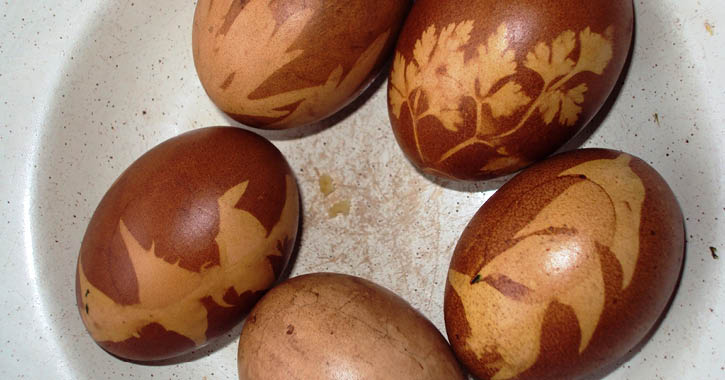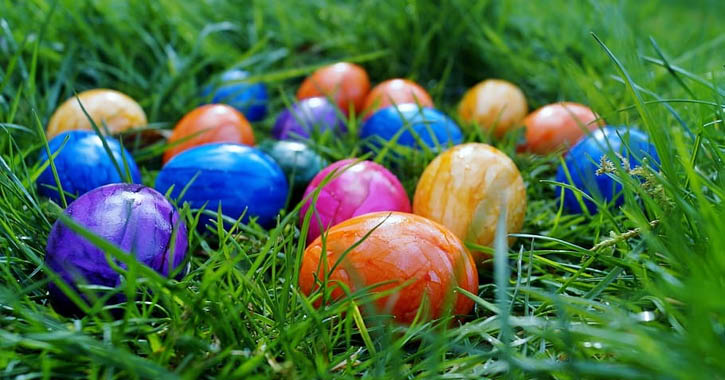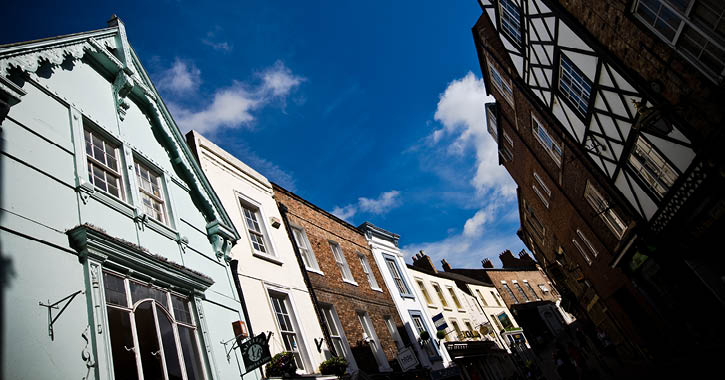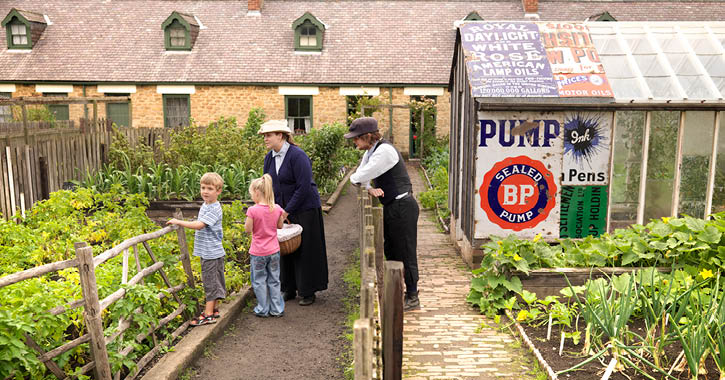Throughout history the people of Durham and North East England have celebrated Easter in a number of unique and sometimes unusual ways.
How many of these historic Easter traditions have you heard of?
Durham City Easter Day Celebration
Dating back to 1826, on the afternoon of Easter Day at 4pm, boys would assemble in the streets of the city and approach any ladies walking through the city and say "pay for your shoes if you please," whilst trying to take their shoes off. If the girls didn’t immediately pay a penny or twopence, the boys would carry their shoes away and could, over a period of an hour or so, collect up to a dozen shoes or more! Needless to say, the “ransom” was usually paid.
On Easter Monday, the roles were reversed. The girls would start earlier in the day and approach every man and boy that they could find and make them pay for the privilege of getting back their own shoes. If the men were wearing boots and would not pay, then the girls would steal their hats and run away. A chase then ensued. If the boys and men caught up with the girl the hat was usually thrown about between several women until the unlucky chap paid sixpence to gain the right of wearing his own hat again.
Maundy Thursday at Durham Cathedral
Maundy Thursday is the day the Christian Church commemorates The Last Supper and when Jesus washed the feet of his disciples, commanding them to “Love one another”.
During the medieval period, Durham Cathedral’s Prior and the monks would wash the feet of 13 poor old men and 13 children in the cloister area of the cathedral. Both groups also received a gift of thirty pence, seven red herrings, drink and three loaves of bread and wafer-cakes.
By the thirteenth century members of the English Royal family, in an attempt to demonstrate their humility and compassion, began washing the feet of the poor and handing out money and gifts on this day.
In the 14th century King Henry IV introduced a modification. He decided to give the same number of gifts as his age. At the age of forty, he gave forty of his subjects Maundy gifts. The sovereign, therefore, became closely identified with performing the ceremony and so it became known as the Royal Maundy.
As time went on, the ceremony changed to the Royal Family distributing specially minted Maundy money. The ceremony continues to this day, with elderly men and women given two leather string purses by the Queen.
The Royal Maundy ceremony was held at Durham Cathedral in March 1967. After the ceremony, the Queen then visited Durham Castle.
Egg Jarping
Egg jarping, or “egg dumping” created in the 1820s was a popular pastime in Durham and was played on Easter Sunday.
The game is a knockout competition which involves players using hard boiled eggs to hit, or “jarp”, their opponent’s egg until only one egg remains intact. Competitors tap the pointed end of their egg against the pointed end of their opponent’s egg.
The winner of one round would go through to the next, until only one egg is left unbroken. The Egg Jarping World Championship competition was established in Peterlee, on the Durham Coast in 1983. The annual event still takes place and can attract over 30 contestants!
Easter in the Northern Coalfields
Good Friday was a rare holiday for the Durham coalminers, and during the 1920s/30s the day was regarded by Durham coalminers as a good opportunity to plant their leek seeds, ready for the Leek Shows which took place in September and October.
Another gardening tradition on Good Friday was for the women of the house to plant parsley. North Country lore said that that parsley travels to Hell and back seven times before germinating and that planting a good bed of parsley on Good Friday would ensure a family of daughters in the future.
Today visitors can see leeks been grown in the gardens of the miners’ cottages in the Colliery Village at Beamish, The Living Museum of The North, and even enter their home-grown vegetables into competitions during the annual Festival of Agriculture.
An important spring flower for the coalminers was the silky, silver-grey male catkin buds known as “pussy willow” which on Palm Sunday would be brought into the house and kept over Easter. Sometimes known as “goslings” because the texture and colour of the willow was like newly hatched geese. No Easter in Durham would be complete without pussy willow in the house.
Raby Castle’s Easter Feast
As a high ranking family of the medieval period, The Earls of Westmorland of Raby Castle would have been well aware that eating eggs was forbidden during the period of Lent. On Easter Sunday, however, their fast would have ended with feasting and merriment. The villagers of Staindrop may even have presented eggs as gifts to their lord of the manor. The bar was set high in 1290 when King Edward I, purchased 450 eggs and ordered them to be decorated with colours and distributed to his own royal household.

Pace Eggs
Pace or Paste eggs (from the Latin ‘Paschal’ meaning Easter) are hard boiled eggs where the shell is dyed using a variety of natural dyes. In Durham popular colours included a brown shade produced by immersing the egg in a pan of boiling water containing onion skins. Or, alternatively, cochineal produced a spiral pattern on the egg. Children would also draw on the shell with wax before boiling, to produce a dye-free pattern.

Easter Monday Egg rolling
Previous generations of local children in Lanchester, found in the Vale of Durham would visit Pasch (or Pace) Egg Bank to roll their eggs down the slope. The last egg to remain unbroken was the winner.
Kinley Hill on the Durham Heritage Coast (south of Seaham) was another Pace egg rolling site.
Related
Comments
Comments are disabled for this post.



 to add an item to your Itinerary basket.
to add an item to your Itinerary basket.
.png)





.jpg)



